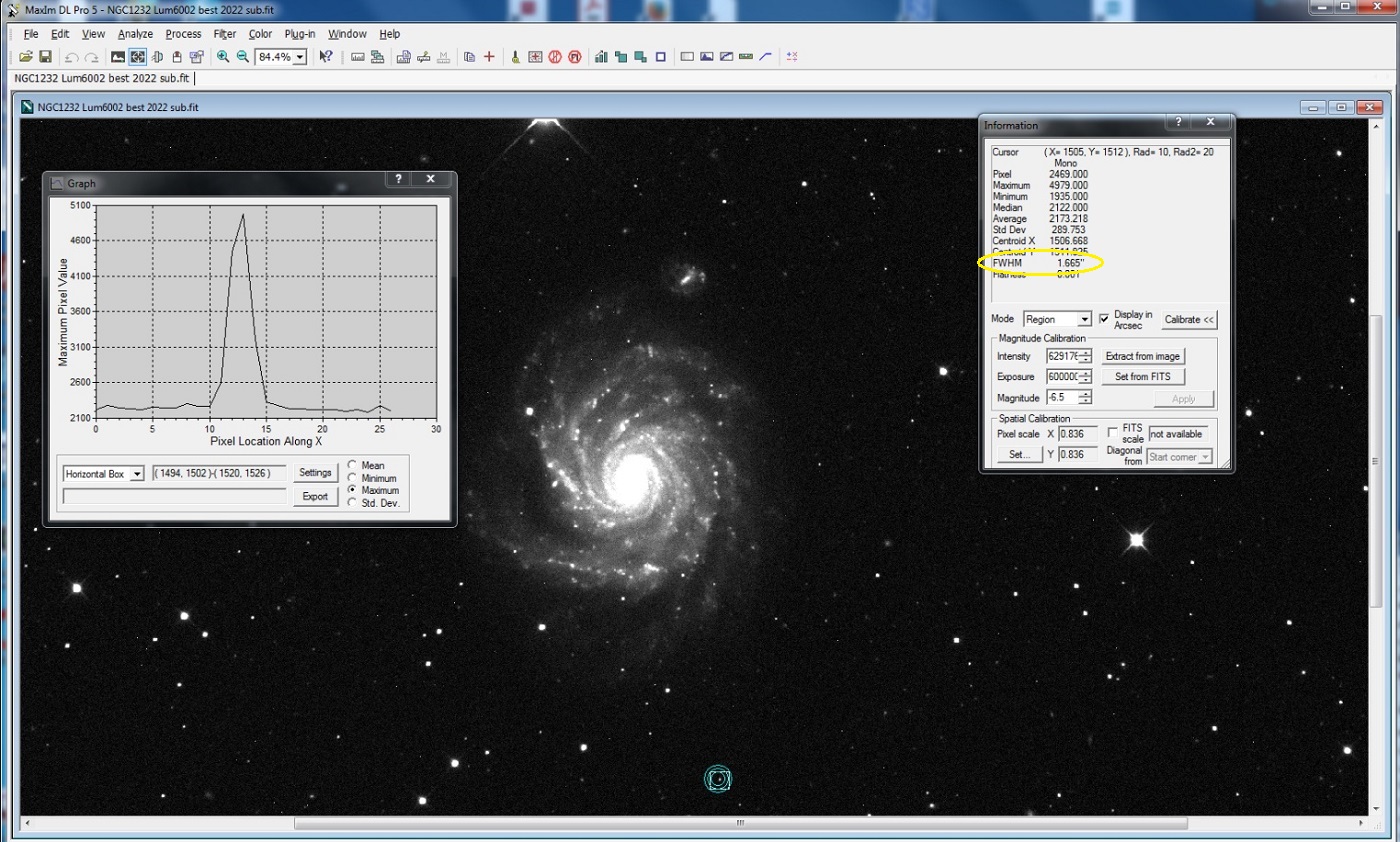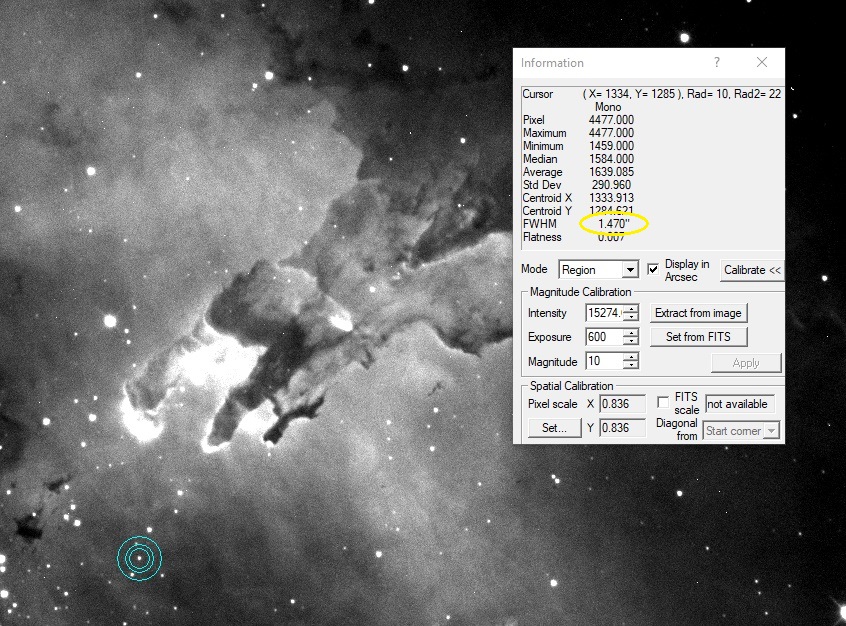





 |
 |
 |
 |
 |
 |
To hopefully arrive at a statistically meaningful value, I went over every Luminance and H-alpha data set, checking the FWHM of many stars on
many individual raw sub frames, from each of the 47 nights and selected the best 10 sub frames from each night (within an hour or so of the
meridian in most cases) thus generally representing 30 to 60min of integration time over each night. Then, using MaximDL software, I measured
the average FWHM of six non flat topped stars in each of the 10 sub frames and found the average of each set of 10 sub frames from each night.
I used an x-axis resolution of 0.1 arc sec and I rounded down below 0.05 and up for 0.05 and above and the result is plotted above.
Things that can be drawn from the result are:
1) Measured FWHM seeing-distribution across the two years, is between 1.4" and 2.3"
2) The most common FWHM values are 1.6" and 1.7" both occurring on 9 nights each.
3) 89% of nights see a FWHM of 2" or better, for at least part of each evening but often for hours at a time.
4) A FWHM of 1.7" or lower, is measured on over 50% of nights and 1.5" or less on about 15% of nights, see below.
5) Only two nights over the two years saw seeing so bad that imaging was terminated (FWHM was not recorded but was > 2.5").
6) A big caveat - the scope used to make these measurements suffers from a small amount of astigmatism, so actual FWHM
measurements, if done using the same method but with an aberration free optical train, would be somewhat better.

A typical luminance sub frame FWHM= 1.6" - 1.7"

The best 15% of nights FWHM < 1.5"
Raw untouched sub frame straight from the camera
And on the VERY BEST night so far in October 2025, the FWHM dropped below 1.3" so considering my scopes astigmatism
means the true FWHM was much closer to 1.0" which is remarkable for Australia!

Copyright Michael Sidonio 2024
| comment | |